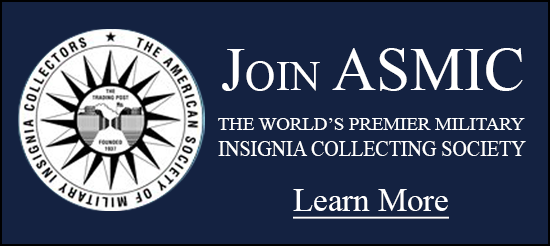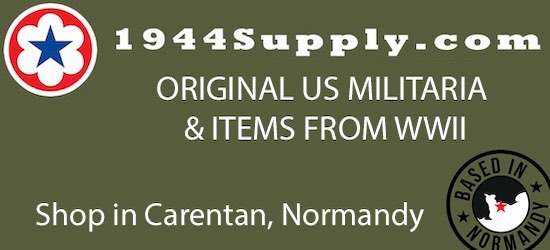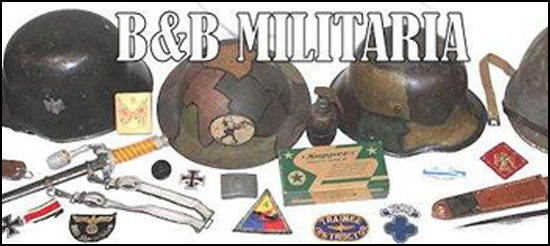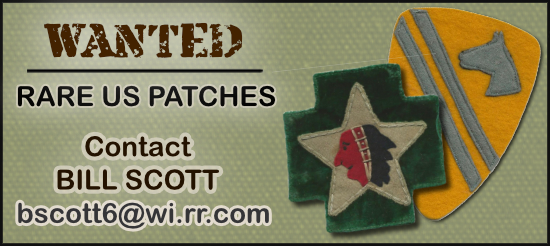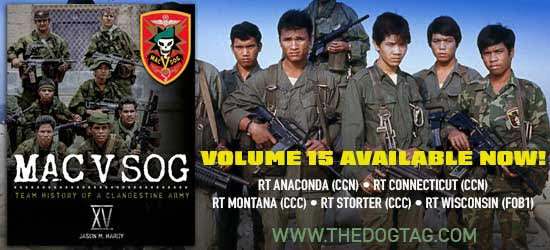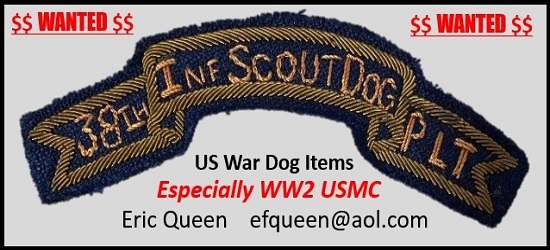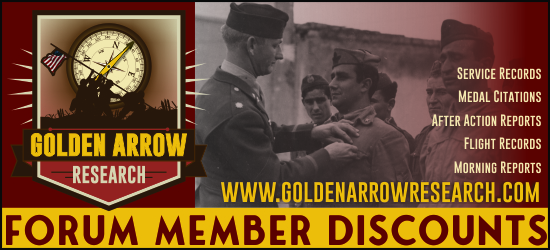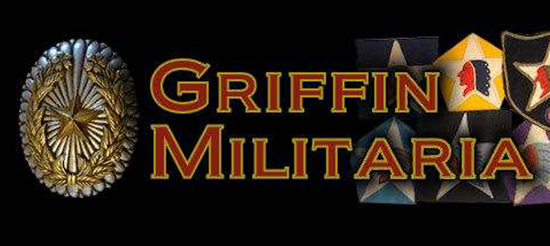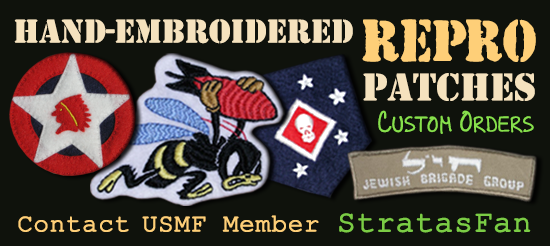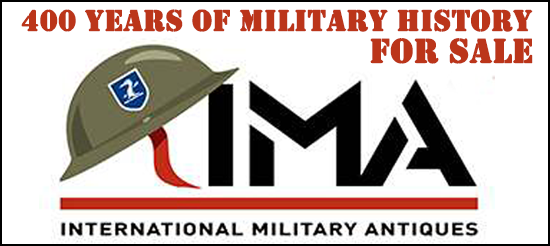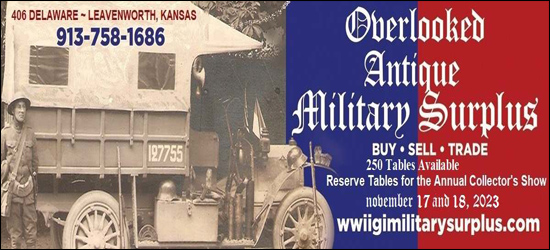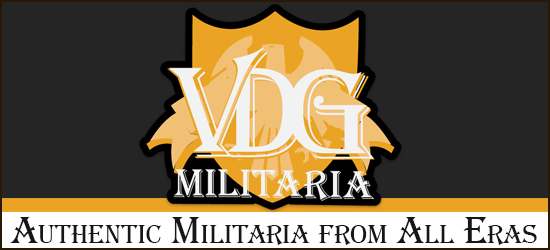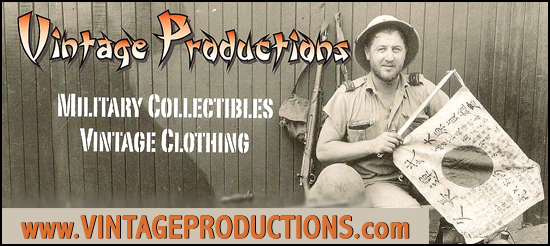-
Donate
Type donation amount in box below.
IMPORTANT! If you donate via PayPal using an e-mail address different than the one you are currently using on USMF and would like a 2024 Donor Icon added to your account, you MUST CONTACT vintageproductions or stratasfan and let them know what email address was used for the donation.
Thank you for supporting USMF.
Donate Sidebar by DevFuse -
Recent Posts
-
By warguy · Posted
Good point now that you mention it I recall seeing that also. I think you are right, it was rare and I think mainly done by pilots flying with the RFC to imitate their uniforms. -
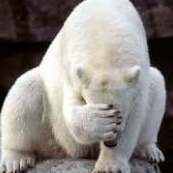
-

By atb · Posted
My understanding is the lead filling was locally done after issue probably to strengthen the badges for attaching numbers and letters. There are several good references on these insignia. One of the best is Emerson's Encyclopedia of US Army Uniforms and Insignia. -
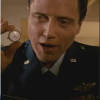
By smwinter207 · Posted
Why is this patch always being massively bid on e bay? Who wants this so darn bad? Lol. S -
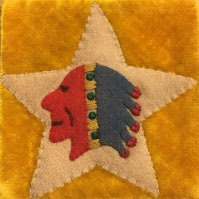
By Blacksmith · Posted
An old-skool collector shared that thought with me many years ago by saying, “for every SS helmet issued during WWII, only three still exist”. -

By gbettcher · Posted
Thank you, what was the size both officer and EM? I see some are lead filled and others are not. What is correct? -
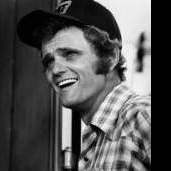
By Jones_Bradock · Posted
As a garage sale fanatic in the Midwest I can affirm that sometimes you come up upon a once in a lifetime opportunity. I live in a tiny town, less than 1,500 people. People here don't use E-Bay to sell things. They store things in there attic or basement until they need to make room for other things and then have a garage sale or an auction when the patriarch passes away. I believe in your find. Nice! -
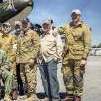
By elh1311 · Posted
Very nice set. This reminds me why this is my favorite thread on here. -
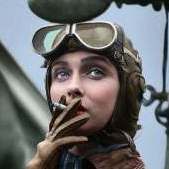
By Bodes · Posted
These were my first impressions as well.....After eighty years, there should be more evidence of interaction between the shell and the wire.....The wire underneath holding onto the skirt having caused orange rust which is newer and active... Funny thing about German helmets....When I first attended military and gun shows in the nineties, camouflage and wired helmets were rarely if ever encountered....Now strangely they seem to show up everywhere.....Best advice is to just enjoy it for what it is....Bodes -

By Tolzer · Posted
CIRCA 1885-1894, 1st CLEVELAND TROOP, HORSEMANSHIP BADGE, 14K GOLD, NAMED, MEDAL OF HONOR RECIPIENT, SON OF PRESIDENT RUTHERFORD B. HAYES. INCLUDES HISTORY BOOK OF TROOP A, 107th REGIMENT, OHIO NATIONAL GUARD, THE BLACK HORSE TROOP and HISTORICAL RESEARCH DOCUMENTATION Troop A, 107th Cavalry, has a rich history rooted in the Ohio National Guard. Initially known as the First City Troop of Cleveland, it was formed in 1877 to address civil unrest during a major railroad strike. Over time, it evolved into a key component of the 107th Cavalry, serving in various conflicts and roles, including the Spanish-American War, World War I, World War II, and peacekeeping missions in Kosovo. This grouping includes: Jeweler Made, 14K Gold and Sterling Silver Horsemanship Badge named to W.C. Hayes History of Troop A, Book Three ring binder full of research documents. Also included are photocopies, MOH citation and other biographical information. Jeweler Made, 14K Gold and Sterling Silver Badge: 14K Gold with Sterling Silver crossed rifle and saber. The badge and the four bars are suspended from a 14K Gold brooch. The brooch is 14K Gold with the word “HORSEMANSHIP” in black. Pin back with open loop catch. The brooch is hallmarked “W.C.H.” which were the initials of Webb C. Hayes, and is dated “1885” The chain links which suspend the 14K Gold horse shoe are also14K Gold. The badge itself is 14K Gold with a Sterling Silver crossed rifle and saber mounted over a 14K Gold horse shoe. The words “FIRST CLEVELAND TROOP” are 14K Gold raised lettering mounted over the horse shoe. The horse shoe is mounted over a 14K Gold leaf. There are four 14K Gold bars which are suspended from the horse shoe. Each bar has been hand engraved by a jeweler. Named: W.C. HAYES: Dated “1885, Camp Garretson, Lakewood, N.Y.” Named: C.H. REEVE: Dated “1888, Camp Sheriden, Columbus O.” Named: C.H. REEVE: Dated “Nov. 25, 1889, Troop Armory” Named: J.T. HUNTINGTON: Dated “Oct. 30, 1894, Troop Armory” Total weight of the badge is 17.8g which has a smelt value of = $1121.40 The current spot price of gold fluctuates constantly. As of Friday, June 20, 2025, sources indicate the price of 14K gold is around $62.78 to $63.29 per gram. Let's use an average of $63.00 per gram for 14K gold for this calculation. Now, we can calculate the approximate smelt worth: Worth = Weight (g) × Price per gram of 14K gold Worth = 17.8 g×$63.00/g Worth = $1121.40 Book: This grouping includes the book, “A BRIEF HISTORY OF TROOP A, 107th REGIMENT OF CAVALRY, OHIO NATIONAL GUARD, THE BLACK HORSE TROOP, FOR MANY YEARS KNOWN AS THE FIRST CITY TROOP OF CLEVELAND” This edition was limited to 500 copies, of which this volume in number 264. Hardcover, 262 pages. Limited Edition. #264 of 500. Embossed black front cover with 107th gilt troop insignia inset. Spine ends and corners lightly bumped. Binding solid with no interior foxing. Illustrated with b/w photographs. Deckled fore-edge. Two unknown autographs on the inside of the front cover. There is an unknown autograph on the bottom of page 49. Hayes is mentioned on pages 27 & 28. Printed in 1923. All pages are intact with no rips or tears. All in all, a very nice copy of a rare title. Size: 6 ½” in width" and 9 ¼” in height. Provenance, History: Lifetime Military Memorabilia & Arms Collection of Peter L. Knepton (1956-2023 Savannah, Georgia) Webb C. Hayes, was a U.S. Army Officer, Medal of Honor recipient, son of President Rutherford B. Hayes, and member of the 1st Cleveland Troop Ohio National Guard. Philippine Insurrection Medal of Honor Recipient. James Webb Cook Hayes was born on March 20, 1856, in Cincinnati, Ohio. In the early 1870s, he attended Cornell University but left to serve as his father’s secretary during his tenure as Governor of Ohio and later as President of the United States. During the 1880s, Hayes joined the 1st Cleveland Troop, also known as the 1st City Troop or the Black Horse Troop, where he served as an NCO and earned the Horsemanship badge. With the outbreak of the Spanish-American War, he was commissioned as a Major in the 1st Ohio Cavalry and took part in the first expedition against Havana. He later participated in the campaigns in Santiago de Cuba and Puerto Rico. While crossing the San Juan River, Hayes was wounded, but was still able to participate in the assault on San Juan Hill on July 1, 1898. The following year, he was commissioned as a Lieutenant Colonel in the 31st U.S. Infantry during the Philippine Insurrection. Just hours after he landed in Manila in November of 1899, he led a daring rescue mission to free U.S. soldiers on Vigan Island. For this he was awarded the Medal of Honor. Hayes continued his distinguished military career, and served in the Boxer Rebellion, the China Relief Expedition, the Russo-Japanese War, and finally World War I. He initially served as a Special Agent for the U.S. State Department, and was later commissioned as a Colonel and deployed to the Italian front as a regional commander of the American Expeditionary Forces. Beyond his military service, Hayes was a businessman, philanthropist and adventurer. He played a pivotal role in the establishment of the first Presidential Library, the Rutherford B. Hayes Presidential Center, in 1916. He passed away on July 26, 1934, in Marion, Ohio. Webb Cook Hayes [1856-1934] second son of Rutherford B. Hayes and Lucy Webb Hayes was born in Cincinnati, Ohio, on March 20, 1856. At the age of ten, Webb joined his older brother, Birchard, at Spiegel Grove, Fremont, Ohio, the home of their great uncle, Sardis Birchard. Webb attended Cornell University from 1873 to 1875, leaving to serve as his father’s secretary during Rutherford B. Hayes' third term as governor of Ohio. Following the presidential election, Webb again served as his father’s secretary. In 1881, Webb moved to Cleveland, Ohio, where he began his business career as treasurer of Whipple Manufacturing Company. Six years later, in association with Myron T. Herrick, James Parmelee, and W. H. Lawrence, he organized the National Carbon Company (later known as Union Carbide). Webb continued for many years as the vice president of the corporation. Webb’s greatest interests included military affairs, hunting, and outdoor life. As a child, Webb frequently was present in the Civil War camps of his father’s regiment. Here he met General George Crook whom Webb considered his godfather. Crook taught Webb to hunt the wild game of the Rocky Mountains during annual fall hunts that continued for nearly a decade. Webb was a veteran member of the First Cleveland Troop, later known as Troop A, Ohio National Guard. He served with Troop A as the personal escort of all United States presidents from Hayes to Taft, and at the funeral ceremonies of three Ohio presidents (Hayes, Garfield, and McKinley). At the outbreak of the Spanish American War, Webb was commissioned a major in the First Ohio Cavalry and mustered into the military service May 9, 1898. He accompanied Major General W. R. Shafter as part of the First Expedition against Havana. Later, he joined Shafter's regiment at Chickamauga Park until embarking with the Fifth Army Corps for Santiago, Cuba. He served through the campaigns of Santiago de Cuba and the invasion of Puerto Rico. Despite wounds received during the crossing of the San Juan River, Webb took part in the assault on San Juan Hill on July 1, 1898. At the outset of the insurrection in the Philippines, Webb was commissioned lieutenant colonel of the 31st U.S. Infantry. After a harrowing 33-day voyage aboard the Manauense, Webb arrived in Manilla in late November 1899. Within hours of landing, Webb led a rescue party to free the U.S. soldiers garrisoned at Vigan Island. He was awarded the Medal of Honor for this act of heroism. Webb also participated in the Boxer Rebellion, the China Relief Expedition, and the Russo-Japanese War. He was instrumental in commemorating numerous Cuban and Chinese battlefields where American soldiers lost their lives. In World War I, Webb served as a special agent for the State Department until the French government’s withdrawal from Paris. Commissioned a full colonel when the U. S. entered the war, Hayes was sent to the Italian front where he served as a regional commander of the American Expeditionary Force. In 1912, Webb married Mary Otis Miller Brinkerhoff, widow of Samuel Brinkerhoff and daughter of Anson and Nancy Otis Miller of Fremont, Ohio. Prior to United States’ involvement in World War I, Mrs. Hayes worked extensively with the Red Cross. In addition to his world travels, Webb took an active interest in community affairs. He was instrumental in establishing Memorial Parkway, a living monument to Fremont, Ohio’s war dead. He and Mary also donated funds and land to help found Memorial Hospital of Sandusky County and the Mary Miller Hayes School of Nursing Home. Mary Hayes donated her home on Court Street to the Fremont Federation of Women. Colonel Webb C. Hayes had many careers: soldier, adventurer, world traveler, philanthropist, and businessman. However, he is best remembered for his role as the moving force behind creation of the Rutherford B. Hayes Presidential Center, the first presidential library in the United States. He died July 26, 1934, at the age of 78. Mrs. Hayes died less than a year later. They are buried on the grounds of Spiegel Grove. He was the second child of 19th United States President Rutherford Birchard Hayes and First Lady Lucy Ware Webb Hayes. During the Civil War his father fought first as an officer in the 23rd Ohio Volunteer Infantry, then as a Brigadier General of Volunteers. During winter months while his father's troops were encamped in winter quarters he was permitted to spend time with his father, and became of favorite of General Hayes' commander, Major General George Crook, who would become his godfather. Young Webb Hayes learned outdoors skills like hunting, fishing and basic survival skills during the encampments; skills that would benefit him later in life. After the war ended, and as his father was ascending in politics, Webb Hayes would attend Cornell University in Ithaca, New York, but left after two years to serve as his father's personal secretary after Rutherford Hayes was elected Ohio Governor for a second term in 1875. After his father then won the highly contested and controversial 1876 Presidential election, Webb Hayes continued to serve as personal secretary to him in Washington DC. While in the White House, he actually served as his father's closest advisor, and was the President's "eyes and ears" regarding political situations and dealings in Washington. When his father left office in 1881, Webb Hayes became a business executive in Cleveland, Ohio, and in 1887 co-founded the company that would eventually become the Union Carbide Corporation, a move that brought him great wealth. He served in the Ohio National Guard, and when the Spanish-American War began he was commissioned Major of the 1st Ohio Volunteer Cavalry. His unit got as far as Florida, and did not see any action during the war, but Major Hayes was assigned as an aide to Major General William Rufus Schafter, commander of the United States Fifth Army Corps. He was with the Corps in Cuba as it crossed the San Juan River, where he was wounded. Despite being injured he participated in the July 1, 1898 Battle of San Juan Hill, and later the land invasion and campaign that resulted in the capture of Puerto Rico island from Spain. He was mustered out of his Ohio Volunteer rank in October 1898, and was commissioned as Lieutenant Colonel in the 31st United States Volunteer Infantry regiment, whom he accompanied to the Philippine Islands. Only hours after he and his men arrived on Luzon Island there on December 4, 1898, he facilitated an assault that freed a besieged garrison of United States troops on Vigan Island by making a daring night time reconnaissance to ascertain the garrison's situation His bravery in the operations would see him awarded the Medal of Honor, with his citation reading "Pushed through the enemy's lines alone, during the night, from the beach to the beleaguered force at Vigan, and returned the following morning to report the condition of affairs to the Navy and secure assistance." When his Medal of Honor was awarded to him on December 17, 1902, he became the first Presidential child to receive the honor and to date only one other Presidential offspring was Brigadier General Theodore Roosevelt Jr. during World War II. He remained in the military, seeing service as part of the 1900 Chinese Relief Expedition as a Volunteer Aide-de-Camp on the staff of Major General Adna R. Chaffee during the Boxer Rebellion, serving as an official observer during the 1904 to 1906 Russo-Japanese War, and twice participating in United States Army operations against incursions along the United States-Mexico border. When World War I began, he served with French and Italian forces until the United States entered the war in 1917, after which he was commissioned as a colonel and serving in Italian Front with elements of the American Expeditionary Forces. He ended the war with the rank of Brigadier General. He was instrumental and the driving force in converting his parents' residence, "Spiegel Grove" in Fremont, Ohio, into a State Park, and in creation of the Rutherford B. Hayes Presidential Library, which was the first Presidential Library in existence, as a repository for President Hayes' papers. He also had his parent's remains moved there from Fremont's Oakwood Cemetery in 1915. He lived until 1934, passing away at age 78 in Marion, Ohio, and his remains were interred with his parents at Spiegel Grove State Park in Fremont. Hayes Webb C., Lieutenant Colonel, Philippines, 1899-1913 BURIAL: Spiegel Grove State Memorial Fremont, Ohio CONFLICT/ERA: PHILIPPINE INSURRECTION UNIT/COMMAND: 31ST INFANTRY, U.S. VOLUNTEERS MILITARY SERVICE BRANCH: U.S. ARMY MEDAL OF HONOR ACTION DATE: DECEMBER 4, 1899 MEDAL OF HONOR ACTION PLACE: VIGAN, LUZON, PHILIPPINE ISLANDS
-
-
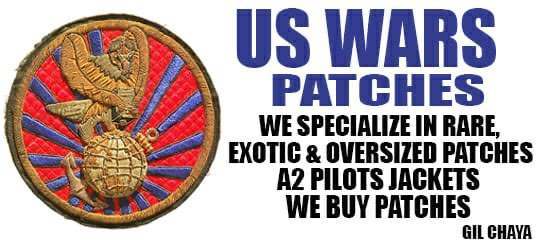
-

-
* While this forum is partially supported by our advertisers, we make no claim nor endorsement of authenticity of the products which these advertisers sell. If you have an issue with any advertiser, please take it up with them and not with the owner or staff of this forum.


